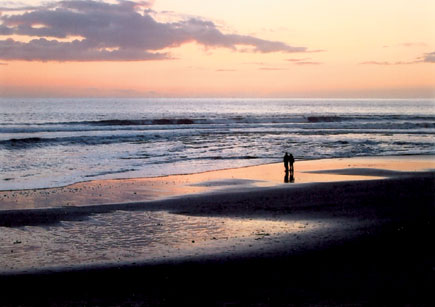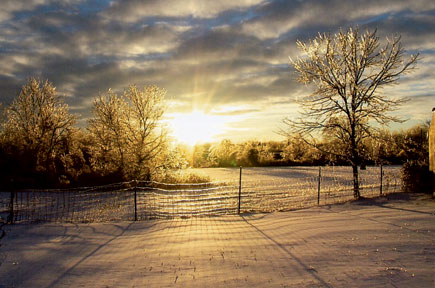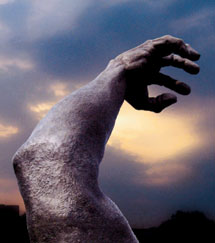Camera Support
Because you'll be working under dim lighting conditions, you should invest in a good tripod or monopod. Some manufacturers have even created small beanbags to steady lightweight point-and-shoot cameras. There are also times when you can brace your camera against a rock or on top of a fence. In any case, avoid the blurred images that occur when using a slower shutter speed while hand holding your camera. Lacking a camera support, use fast film in the 400--1600 range, or use an equivalent ISO setting on a digital camera.
 |
|
|
It's always a good idea to scout a location in advance for subjects suitable for silhouettes. Look for simple, recognizable shapes, such as trees, mountains, or even a structure on a beach. It's also important that your subject be surrounded by the brightly colored sky. A fisherman on the beach at sunset is an identifiable shape, but fishing boats lined up too closely in a row may merge into a dark cluster. Any subject that you position in the foreground of a sunset sky will be silhouetted unless you use flash to illuminate it. The dark blue sky after sundown on a clear day, or the pink and orange clouds after sunset on a cloudy one, make great backdrops for silhouettes.
 |
|
|
Use A Long Lens To Capture A Big Sun
You can render the setting sun as a large solar disk by using a long lens. Use the telephoto setting on your camera's built-in zoom lens, or use a long lens in the 100--500mm range if using an SLR with interchangeable lenses. Be careful to keep the sun out of the frame while you meter the sky at sunset. To meter correctly, focus on an area of the bright sky to the left or right of the sun itself, partially depress the shutter button to lock in the exposure, and then recompose your photo to place the sun where you want it. Haze and clouds enhance sunsets by diffusing the light and adding color.
 |
|
|
To photograph a cityscape after sunset, find a good vantage point during the daytime and return later to capture the best light. Start shooting and watch how the light changes as the sky gets darker and the lights in buildings become more visible. It's a good idea to take lots of pictures, because there will be a point when the light in the sky and the city lights are more evenly balanced, and you'll get detail in both.
Look for other subjects that provide dramatic night lights, such as amusement parks, neon signs, bridges, monuments and statues. You'll get the best results by shooting before the sky gets totally dark.
 |
|
|
· Use a camera support for optimum sharpness.
· Find simple objects to render as silhouettes.
· Use a telephoto lens for a large sun.
· Photograph city lights at dusk.
· Shoot lots of pictures.
Source: http://www.shutterbug.com
